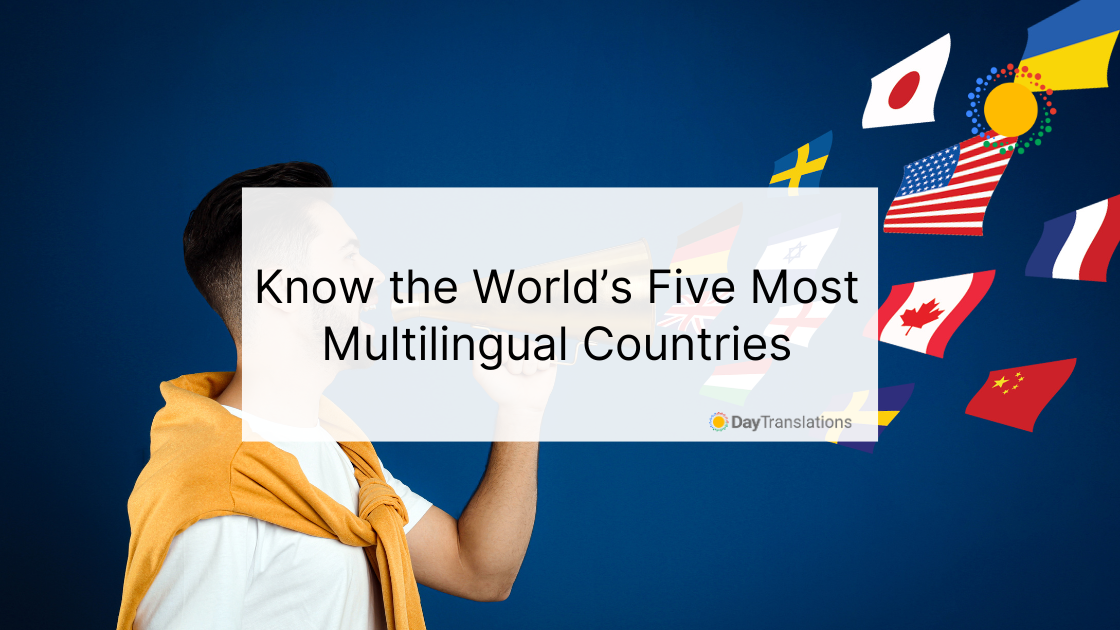The spread of language across distances and borders may be attributed to the vast expansion of colonialism, a great movement of people from one area to another, or even the influence of location and geographic proximity. While there are a number of reasons for the spread of a certain language, there are countries that have three or more recognized languages. For a country to be deemed as multilingual, there must be a large part of its population that can fluently speak and understand more than three languages. Here are 5 of the most multilingual countries in the world.
Aruba
Aruba is a country known for being a tropical paradise. It is situated in the southern side of the Caribbean and is close neighbors with Venezuela. It absorbed a wealth of language influences because it is technically part of the Netherlands kingdom. Dutch is one of its official languages and so are English and Spanish. All three are required languages in the Aruban system of education – so by the time a student graduates, he is already fluent in these three. In addition to that, Papiamento, a Creole dialect, is what Arubans use to communicate on the streets and in their homes. It is a combination of the three languages and is also used by the media and other communication avenues
Luxembourg
Despite its size, this Northern European country boasts of three official languages. Luxembourgish is the local language, and is a mixture of German and French. It is also used as the medium of instruction for the first few years of a child’s life in school before shifting to German and then French. Similar with their education system, the Luxembourg Parliament is also very much trilingual. While debates are presided in the local Luxembourgish, legislation is drafted in German and once passed as law, the statutes are written in French. A large percentage of the population is able to speak in English, which is a required school subject. Spanish and Italian are also taught in some schools.
Singapore
Located in Southeast Asia, this multicultural country has four official languages. These are English, Mandarin Chinese, Malay and Tamil. Despite four official languages, it is common for most residents to speak and understand one or two. Many public signs and government postings are often translated into all four to recognize diversity as well as to acknowledge the melting pot of cultures that make up the state. English is the primary mode of instruction in many schools and institutions. Due to the number of ethnic groups residing in the country, as well as the influx of business expatriates and tourists, locals are very well versed with the English language. Another local language called Singlish is also very popular among Singaporeans. It is a combination of English, Chinese, and Malay words with most words being English.
South Africa
Due to the number of ethnic groups belonging to various regions of the country, South Africa has 11 official languages. Although the government and press operate in English, only 10% of the population speaks it as a first language. The most spoken language is Afrikaans, a Germanic language that resembles Dutch quite closely. This language is spoken fluently in South Africa’s southern and western regions. Apart from English and Afrikaans, there are also nine Bantu languages that are recognized and spoken by the various tribes within the country. These are Swati, Southern Sotho, Venda, Ndebele, Tsonga, Tswana, Northern Sotho with Zulu and Xhosa being the two most prominent. Most of these tribal languages are distinguished by clicking sounds.
India
With 18 official languages, Hindi and English are the two most popular languages in India. While most urban dwellers will fluently speak both, English is often favored as most states within the country have their own local dialects that are different from Hindi. Moreover, it is common for local governments and media to use local dialects rather than English or Hindi. Thus, many people are capable of speaking at least three languages – English, Hindi, and a local dialect. The educational system follows three languages as well, with Hindi and English as compulsory. It is also reported that more educated Indians as well as those who move from different areas of the country can even speak more than three languages. Like most multilingual people, fluency will vary from person to person but most will have working knowledge of other languages.
Having three or even more languages in one country can prove to be beneficial in terms of foreign relations and business opportunities. Moreover, it enriches the people culturally in so many different ways because language truly opens doors.












Michael Keys
Posted at 14:27h, 01 MarchYes. That is pretty Crazy and I don’t even think the USA has even 1 official language.
Adam Hovey
Posted at 22:28h, 11 MayEach state choosea heir own official language friend since I do believe Hawaii’s official language is Hawaiian. English is official in Texas but special Provisions are made for Spanish speakers there’s no official language in New Mexico but the Constitution mentions the right of Spanish people. Now there is no National official language however all federal laws must be written and passed in English
ARNAB MUKHERJEE
Posted at 01:18h, 29 JuneSee I as Indian can speak, read and write 5 languages fluently(English, Italian, Hindi, Assamese, Odiya and Bengali). Also I do understand Punjabi, Urdu, Marathi but I can’t speak fluently and also I can’t write.